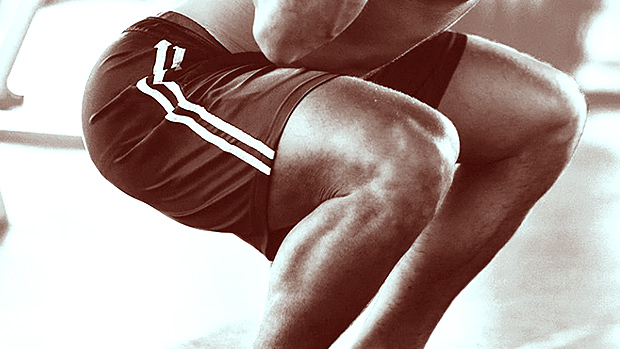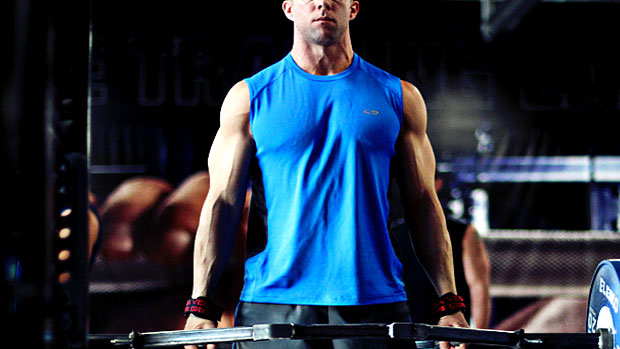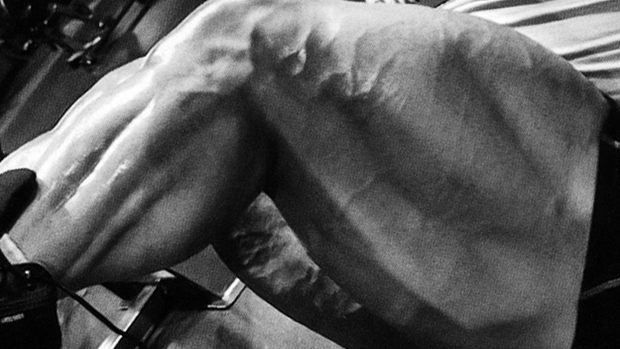3 Reasons Why Squatting Hurts
If you experience pain during or after you train the regular back squat, there are three main reasons for it:
- Your technique is off. You never really learned the movement.
- Your body structure isn't a good match for the movement. Kind of like you want to slam dunk, but you're five feet tall. You're starting at a disadvantage.
- You have previous injuries to deal with. Similar to driving a car while two of the wheels are leaking air – a disaster waiting to happen.
No worries, below you'll find five effective alternatives for a painful squat. The intent of the exercises is to make sure you can continue to maintain or even build your strength, your power, and your musculature when it's become clear that the regular back squat isn't working for you at this time.
There are several areas that might be causing you pain during squatting. You might have a low back that's barking at you, your knees might be aching, or even your shoulders and elbows might be hurting. All of the exercises have their own specific reason for being a good alternative. Some work around issues and still train the regular squat pattern, while others are a step in another direction but still squat related, pattern related, and functional.
When to Use It – When you have low back issues.
The classic version is good, but if you want to increase the stress level elevate the front foot with a step and go deep on each rep. This variation is one of the best out there for safe leg development. You get a lot done with a low amount of risk. This choice is a slam-dunk if you have back issues but still want to train hard.
You can train this exercise for different purposes by varying the execution, but in the video I hold the dumbbells in the rack position. This is more similar to a front squat and the benefit is that the upper back has to work a bit more.
Technical focal points:
- Make sure your grounded foot is active and the toes are in contact with the floor.
- Drive mainly through your heel.
- Keep the abs/core engaged (ribs down) and the chest held high (upper back activated).
When to Use It – When your back doesn't tolerate regular lifting.
There are situations when the low back can be so out of whack that most squat variations will cause problems. Prowler/sled marches are a great choice, especially for the quads, glutes, and hips.
The main benefit of this exercise is the elimination of eccentric stress, meaning there's only a push phase and no "negative." You can go heavy, but when your back is out, go light to moderate and instead increase the distance you push or march.
Don't be concerned that you won't stress the legs enough. Besides training the quads and glutes, this exercise will force you to integrate your whole body.
The video shows two different hand placements. Holding the low bar causes more forward lean and is great for athletes, but it can be stressful for someone with knee issues. If that's the case, go for a high grip and a more upright torso. You can also push with more power and even run with the sled, but going slow and controlled is the first variation you should try when substituting the squat.
Technical focal points:
- Keep the upper back as activated as you can.
- Push the feet DOWN and back.
- Go slow and controlled.
When to Use It – When you have low back or knee issues.
The reverse lunge is all about acceleration and power generation. Compared to a regular lunge where you have to decelerate your body going forward, stop, and then push back up, the reverse lunge has a smooth "set-up phase" and a powerful push/drag action back to the starting position. This makes it a perfect weapon for power athletes who experience either low back or knee problems during regular squats.
By controlling the angle of the shinbone, or more precisely, limiting the forward knee movement, you make it easier on your knees. That said, you can allow more forward knee movement if you want to focus more on the quads.
From the bottom, power-generation phase, combine a push with the quads and a pull from the glutes and hamstrings. It's a common mistake to overly rely on the quads for creating the movement. If you want to limit the stress on the knee, you have to really use your hips as well.
In the video you'll see two different positions of the dumbbells. The rack position load is similar to a front squat and will activate the upper back and core to a greater degree. The hands-down position reduces some of the upper body focus and is a bit easier to perform for most people.
Technical focal points:
- Take a long stride backwards (what feels like too long of a stride is often optimal).
- Limit the forward knee movement of the front leg.
- Focus on a combined push and pull action up to the start position and finish strong with the core and glutes engaged.
When to Use It – When you have knee or shoulder issues.
Going deep in the squat can be stressful for the knees over time, but a high box will alleviate most of the stress. When using a high box, there's a tendency to increase the weight on the bar, but that can defeat the purpose. If you substitute the regular back squat for a high box squat because of knee issues, keep your ego in check to get the intended benefit.
There are several ways to do the high bar box squat. You don't have to use the crazy wide stance that's often used by Westside lifters, but wider than "regular" is often a good choice.
If you want to continue with your regular squat form, simply use the box as a measure of depth. Just touch the box; don't sit down on it fully like in a regular box squat.
Use a regular bar if your shoulders are fine, but if you have shoulder pain from squats or a lot of bench pressing, the safety bar is your best choice.
In the video I perform more of a touch and go version with a semi-wide stance. The chains are attached for loading the top portion of the movement while alleviating some of the weight in the bottom position.
Technical focal points:
- Sit back and down.
- Don't allow more forward knee movement than you normally do.
- Keep the tension in the low back, abs, and hips, and don't lose tightness. This goes for both the touch-and-go technique and the Westside box squat style.
When to Use It – When you have low back or shoulder issues.
Lack of core stability is often what causes low back problems during a regular squat. The bar placement in the Zercher squat makes it a lot easier to activate the core and control the low back and pelvis. It's simply more natural (and real-life functional) to hold onto something in front of your body.
The Zercher squat is hands-down the best and safest way to squat, and it has more functional carryover than other bi-lateral squat variations. In fact, it's primal.
Squatting with a regular bar will often place the shoulders in extreme rotation, and if you frequently train heavy and never change bar type or placement, you might end up with shoulder pain – common among many powerlifters. This is one of the reasons why they use specialty bars in their training.
That said, the straight bar in the Zercher squat can be a bit tough on the forearms over time, so a zig-zag bar or even bamboo bar is a good choice if this is an issue.
Technical focal points:
- The bar will naturally pull you down, so fight this by activating your upper back.
- Activate the hips by "spreading the floor" while going down into the hole.
- Finish strong with the glutes and core engaged.





